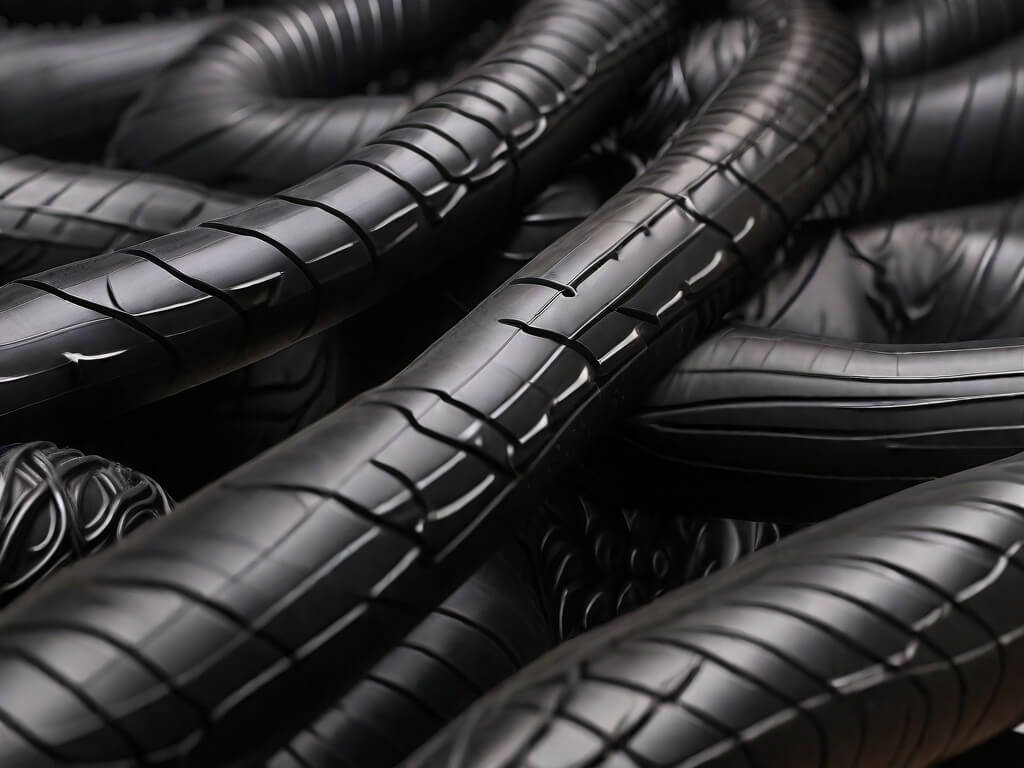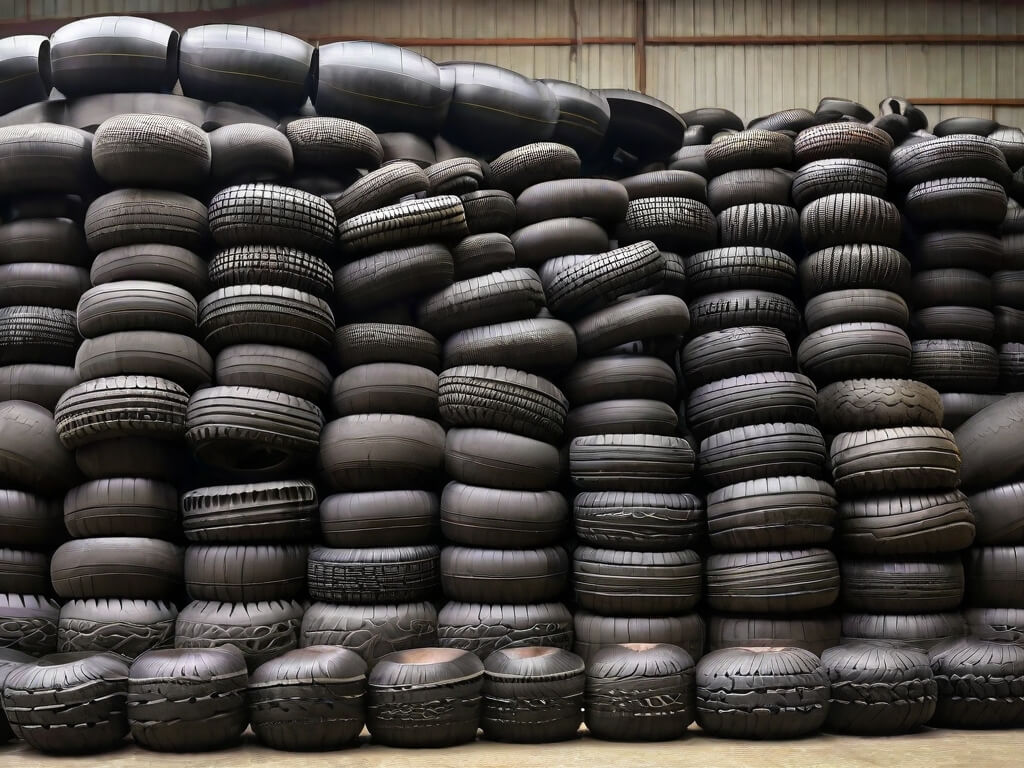Explore the fascinating evolution of rubber, from its humble origins in latex to shaping industries. Discover the pivotal moments and innovations that transformed rubber into a cornerstone of our modern world. 🌐🔧
History Of Rubber
The age of the earliest specimens of rubber is unknown, although samples of fossilized rubber discovered in 1924 in the lignite deposits of Germany are believed to date from the Eocene period (from 60 to 55 million years b.c.). An Aztec wall painting showing a priest offering two balls of rubber as a sacrifice has been traced to the 6th century a.d. The first mention of rubber in print appeared in 1530 when Pietro Martire d’Anghiera, an Italian attached to the Spanish court, described “gummi optimum” in his De Orbe nuovo decades. In 1536 Toribio da Bonaventa (called Motolinia) described various Aztec religious rites involving rubber. In the same year Gonzalo Fernández de Oviedo y Valdés, in a history of the West Indies, described a game called botos, played by Caribbean and North American Indians, with a rubber ball. Similar references were made by Antonio de Mendoza in 1549 and Diego Duran in 1570. Several writers in the early 17th century referred to rubber, notably Antonio de Herrera y Tordesillas in 1601 ; Fray Juan de Torquemada in 1615 ; Bernabé Cobo in 1653, and Jean Tradescant in 1656.
For many centuries rubber was largely a curiosity, and it remained for two Frenchmen— Charles Marie de la Condamine and François Fresneau—to arouse scientific interest in rubber and its properties. In 1735 La Condamine led an expedition dispatched by the French Academy to the equatorial regions of South America. One year later, shortly after his arrival in Quito, he sent to the Academy a few rolls of a blackish, resinous substance which he called caoutchouc (from an Indian word meaning, literally, weeping wood) ; but it is not certain that these were ever received. Fresneau, an engineer living in Cayenne, had a few rubber objects brought to his attention by some Portuguese and Indians from Para, Brazil. He decided to explore the forests of Guiana to find the tree that produced the rubber. In 1747 he discovered several kinds of latex-producing trees, including Hevea brasiliensis, and actually fashioned a pair of boots and several pear-shaped objects with the rubber.

Fresneau prepared a Mémoire about the new source of rubber, and it was read to the French Academy by La Condamine in 1751. After describing the appearance and growth of the tree, Fresneau pointed out that the rubber could be put to many uses ; hut, having discovered that rubber articles tend to stick together, particularly when freshly made and exposed to the sun, he expressed the belief that the latex must be treated shortly after being taken from the tree, to avoid coagulation. In a covering note to the Mémoire, La Condamine referred to his own discovery of the “Hhévé” (Hevea) tree in 1736 and reported: “The same tree grows along the edges of the Amazon. The Indians . . . made boots of it of one single piece which are impervious to water and which when smoked look like real leather. They also make bottles out of it which are able to contain all sorts of liquids.” He also referred to the fact that, profiting by experience, he had protected his scientific apparatus from the rain by coating canvas with rubber.
The next fifty years witnessed the beginnings of the rubber manufacturing industry, with a good deal of this early work devoted to methods of dissolving the gum from the hardened state in which it was commonly received in European countries. Researches on suitable solvents were first launched by Louis Antoine Prosper Hérissant and Pierre Joseph Macquer in 1763. By 1768 they were producing solutions of rubber in ether which they used for making tubes and catheters on wax formers. In 1780 Franz Karl Achard first investigated the physico-chemical properties of elastic resins. A study of oil obtained by dry distillation of rubber was made in 1781 by R. Berniard. Cyclized rubber using sulphuric acid was produced by Jean Godefroy Leonhardi in 1781. In 1790 W. Roberts and W. Bright treated canvas with rubber varnish, and secured the first known rubber patent (British Patent 1751/1790). The preservation of rubber latex by alkalies was noted by Antoine François de Fourcroy in 1791. Two other maj or events took place in that year : C. Grossart produced rubber tubes by rolling strips around glass cones or cylinders and Samuel Peal was granted a British patent covering waterproofing materials, such as leather, cotton, linen and wood. Peal’s process involved the waterproofing of fabrics by treatment of the cloth with a solution of rubber dissolved in turpentine, and is generally regarded as the actual start of the commercial processing of rubber.
Although it has been definitely established that a factory for the production of elastic rubber bands, garters, and braces was in operation at St. Denis, near Paris, France, in 1803, and it is known that a factory for the manufacture of elastic goods was established in Vienna in 1811, the real origin of the rubber manufacturing industry as a large-scale project began in England in 1820 when Thomas Hancock, often referred to as the “Father of the Rubber Industry,” opened a small shop in London for working rubber and cutting strips to insert into garters and waistbands. Three years later, the second company, Charles Macintosh and Company, was organized in Manchester, and subsequently these first two concerns were merged. The third British rubber manufacturing company was David Moseley and Sons, Ltd., which was founded in 1833 at Chorlton-on-Medlock.
Hancock became a notable developer of methods of using rubber commercially, inventing many processes and machines, the basic principles of which were still in use in 1955. In 1820, the same year he started his rubber working shop, Hancock invented the masticator, a machine for kneading and softening raw rubber to make it suitably plastic for further handling. He developed methods of using rubber in its natural liquid state to saturate various fabrics (1824), of applying rubber solutions to conveyor belting (1825), and of using latex for the manufacture of articles of clothing (1830). He is also credited with the first use of molds to form rubber under heat and pressure.
Charles Macintosh, a young textile chemist, developed methods of proofing, or doubling. It occurred to him that naphthenic oil, produced as a byproduct with coal gas, might be a suitable solvent for rubber. By dissolving parings of rubber in the naphtha he produced a thick solution resembling “transparent honey,” with which he coated all kinds of fabrics. The new solvent was far superior to any of the others tried up to that time. It evaporated quickly and left the rubber in its original state, not sticky as turpentine did; and it was considerably cheaper than ether. Furthermore, when two of the coated fabrics were pressed together, a truly waterproof material was the result. Macintosh secured a patent on the process in 1823, and garments made from the new fabric achieved quick popularity. First known as Waterproof Double Textures, they soon became universally known as Macintoshes. Subsequently they were called Mackintoshes, but it is not known how the “k” came to be included.
Development in America.
The birth of the rubber manufacturing industry in the United States was not far behind the development in England. Shortly after 1800, United States businessmen began to import rubber shoes and rubber bottles made by South American natives. Thomas C. Wales, a Boston merchant, began to import rubber shoes from Brazil in substantial quantities in 1823, and sold them at prices ranging from $3.00 to $5.00 a pair. About this same time, Samuel C. Smith, of Providence, R. I., who had a store on Maiden Lane in New York City, began to produce rubber shoes domestically. The first actual manufacturer of rubber goods in the United States was the Roxbury India Rubber Factory, which was organized in Roxbury, Mass., in 1832 and received its charter in 1833.
One of the organizers of the Roxbury India Rubber Factory, which later became the Goodyear Manufacturing Company, and still later the Boston Belting Company, was Edwin M. Chaffee. While still a foreman in a Boston patent leather factory, Chaffee thought he could produce a rubber varnish which would render leather waterproof and at the same time give it a smoother surface. He began his experiments in 1831 and soon had a mixture of rubber and lampblack in turpentine which gave the finish he was seeking when spread on leather or cloth. The application of the mixture was somewhat difficult and accordingly Chaffee developed a coating machine which quickly was dubbed the “Monster.” It weighed 30 tons and consisted of four hollow rolls placed one above the other, each six feet long and heated by steam. Chaffee was also the inventor of the two machines which are still common to rubber factories throughout the world—the mill and the calender.

Inevitably, the early success of the Roxbury India Rubber Factory caused the founding of a number of other companies, with capitalizations ranging from $50,000 to $500,000, in Boston, Chelsea, Woburn, and Framingham, Mass., and New York City, Staten Island, and Troy, N. Y. However, since the rubber products being manufactured stiffened in winter and became soft and sticky in summer, these enterprises were short-lived. None, except the Roxbury concern, lasted for more than three years. This was the status of the industry before 1839, when Charles Goodyear discovered vulcanization.